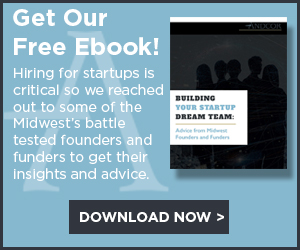Many thanks to Paul Hanson for sharing his experiences and insights.
What is an Integrator?
Although I have read my share of business and career development books over my 30+ year career, only a few stand out when it comes to self realization and understanding myself and how I can provide the most value to an organization.
In his book “Traction – Get a Grip on your Business”, Gino Wickman, defines and analyzes a set of tools and components that make up the Entrepreneurial Operating System® (EOS). EOS addresses six major components of a business: People, Vision, Data, Process, Traction and Issues.
Two critical organizational roles identified by Wickman in the EOS are a “Visionary” and an “Integrator”. A Visionary is someone who is an ideator, strategic thinker, connected, sees the big picture with a lens of a futurist. Traditionally, a Visionary is often called a Founder, CEO, or President. An Integrator is someone who is the “glue” for an organization, accountable for financial results, executing plans and a steady force. An Integrator may often have the role of President, Chief Operating Officer, or General Manager. According to Wickman, each organization requires an Integrator, while only half (50%) require a Visionary.
When I was 15, my first job in small town Minnesota was working for a small business owner in an agriculture manufacturing business. The owner, who was a World War II vet with no high school education, had an amazing ability to ideate and build things with his hands. He needed help around him to organize the office, hire people, develop technical specifications, and sell the product.
I didn’t realize it then, but, that owner needed an Integrator.
Why is an Integrator an increasing vital role in a $2-$50M business?
A Visionary often has big ideas, relationships, and operates more on emotion. This can lead to challenges in detailing with day-to-day details, following through and distractions that can lead to organizational chaos. An Integrator must be able to translate the Visionary’s ideas and vision into actionable and achievable steps.
Having the combination of these two positions enables the Visionary to continue to do what they do best: ideate, thrill customers, and run quickly! To make this partnership successful, there needs to be a lot of trust between the Visionary and Integrator, as the organization will be looking to both for direction (Visionary) and plans to get there (Integrator). This pattern has proven successful in many organizations as documented by Wickman and his firms’ nearly 17,000 clients.
In a nutshell, an Integrator sets the bar for accountability and tracks progress across all business disciplines. With such a wide band of responsibility, an Integrator is the primary person in an organization who is responsible for removing roadblocks and obstacles. Driving for execution while providing clarity and visibility is also a vital organizational asset that an Integrator can offer to a company’s board of directors, investors, employees, key vendors, and partners.
Do you have what it takes to be an Integrator?
It has been estimated that only 2% of people have the skills to be an Integrator, and that Visionaries outnumber Integrators 6:1. With the growing popularity of EOS, the Integrator role is being increasingly more familiar and effective way to describe what some folks like me do (and growing in importance).
In the first half of my professional career, I worked as a Programmer, Systems Analyst, Tech Support, Project Lead and Project Manager. All were fairly technical roles across several hardware and software platforms.
After experiencing the thrill as a co-founder of a venture based software started in the early 2000’s, serving as a Vice-President of Engineering, I moved into a Chief Information Officer (CIO) role. The role of CIO at a fast growth internet retailer gave me a deeper experience dealing with vendor management, capital and expense budget ownership, and compliance/audit responsibilities. From there, I moved into a Chief Operating Officer (COO) role, adding operational duties such as call centers in multiple countries.
Over the past 3 years, I have served as the COO of MyAlerts (recently renamed from TrackIf), business.myalerts.com, a consumer intent marketing and alerting platform. Working alongside the CEO and rest of the management team, I have enjoyed living the role of an integrator in an early stage company. From finance to human resources to marketing to legal to sales to technology (often in the same day!), I enjoy the intense variety of items on my daily to do list.
I believe that a person can take multiple paths to become an Integrator. Mine is one of many. You must be a doer, who enjoys driving results, you can’t take a ‘hands off’ approach. You must be able to see and act on the ‘big picture’ of your business, and not be taken off course by distractions that harm team unity and organizational clarify.
I enjoy hearing the stories of other Integrators and interacting with others considering an Integrator role. Connect with me on LinkedIn.
Paul Hanson is a business and technology leader with a proven history of building teams and scalable software systems. Prior to his current role as Integrator (Chief Operating Officer) at MyAlerts, he founded two consulting companies and co-founded a SaaS startup. While serving as CIO at Bluestem Brands, he delivered a scaled/integrated architecture during a time period in which the company grew from $100 million to $500 million. Paul is a graduate of Minnesota State University, Mankato and serves on the Minnesota State University, Mankato Foundation Board of Directors.










